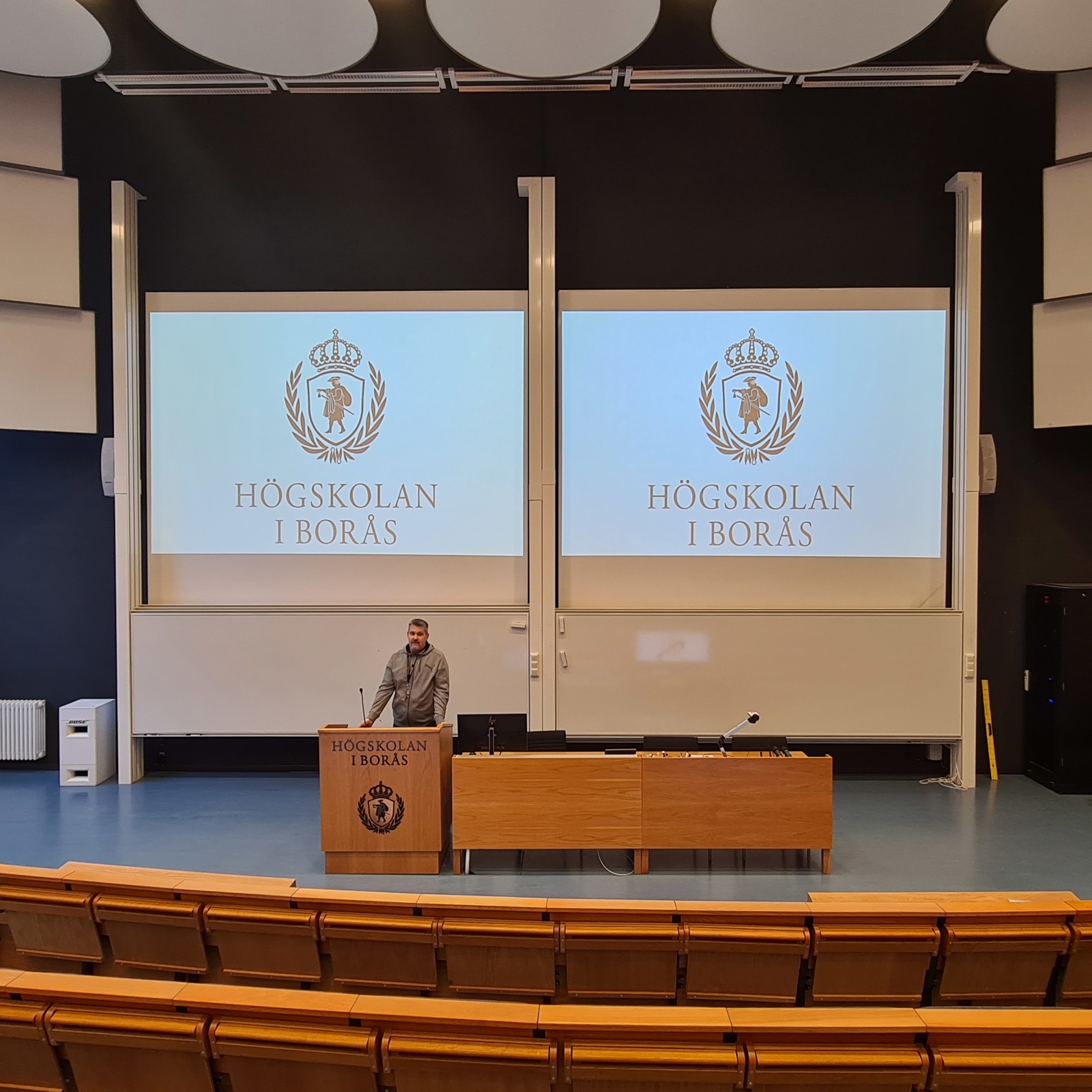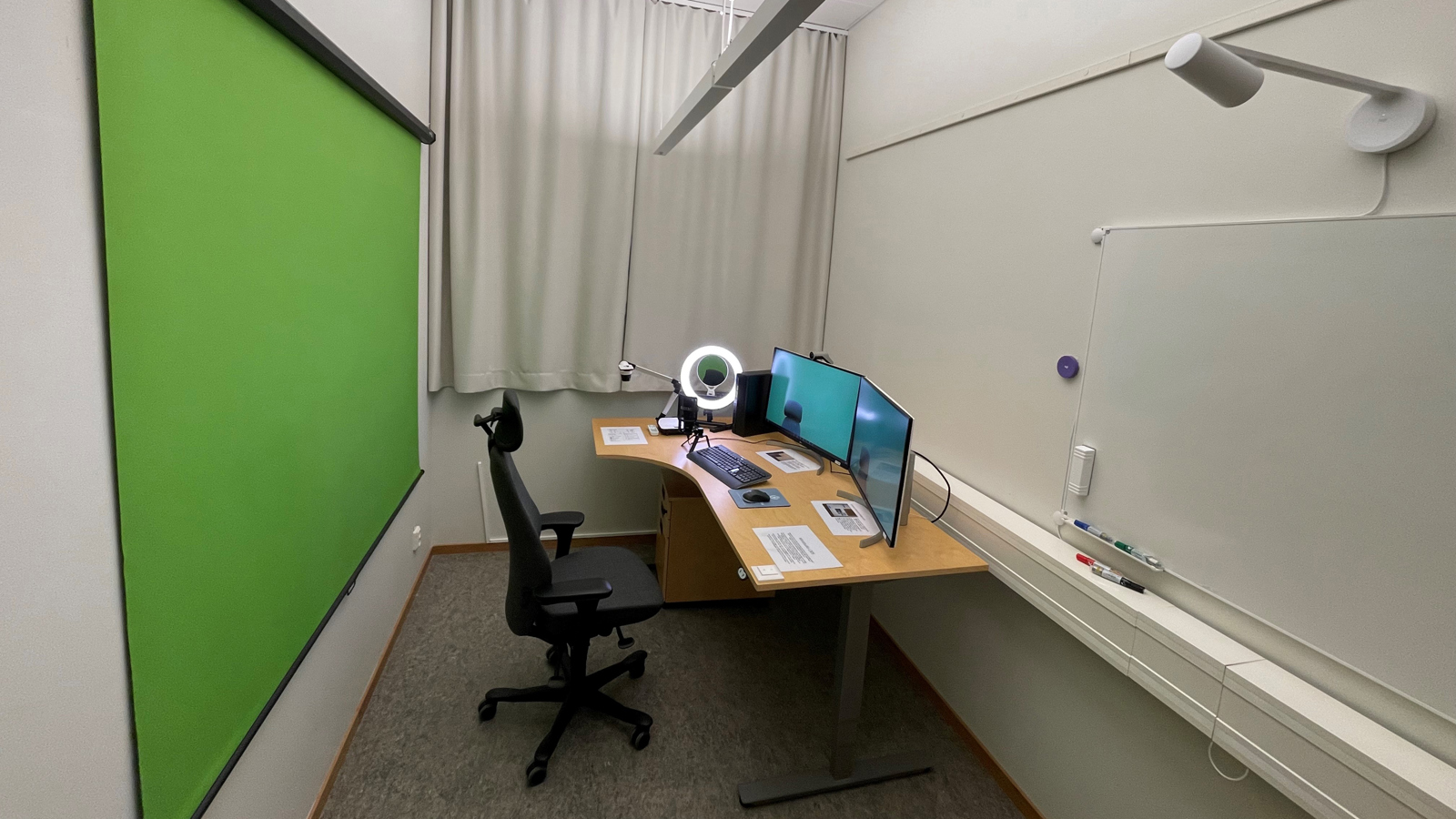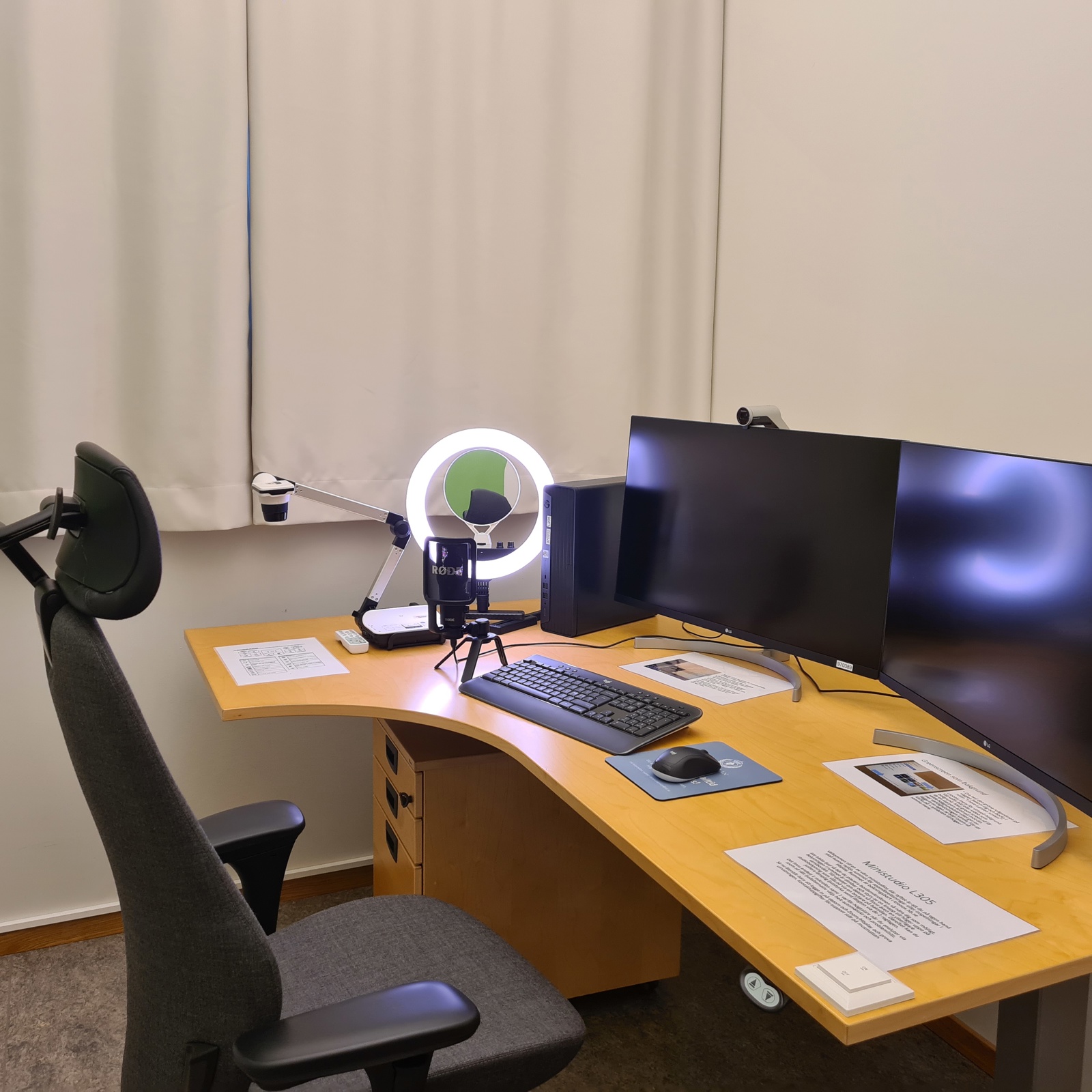New and better technology in classrooms provide opportunities for hybrid lectures
2022-03-03
Did you know that during each term, about ten classrooms at the university receive new and updated technology? Mikael Lövgren, Service Coordinator at the Campus Facilities and Sustainability Office, says that during each term, they review the classrooms and investigate what needs there are. This may mean replacing a screen or projector, but also larger projects such as preparing rooms so they can be used for hybrid lectures.
“With each update, the experience gets better for students and teachers. Our recent focus has been to offer better opportunities for hybrid lectures.”
At a hybrid lecture, students have the opportunity to participate digitally and physically. In order for teaching to work equally well for all and to facilitate participation, more and better technology is needed. The sound must work well and one camera may not be enough if the teacher needs to show something on the board.
“A hybrid lecture also places high demands on the teacher. It's often not enough that you just know how to use Zoom; you may also need to learn other software. You also need to think about speaking to those present in the room but also those who are online, while also keeping your eye on the chat," explained Mikael Lövgren.
The university's two largest lecture halls, Sparbankssalen and M204, received new technology at the cost of just over SEK 1 million last year. With the new technology, you can control lighting, blackout curtains, cameras, and more. You can also connect the two halls so that sound and images are sent between the halls in cases of large events. There is also new technology in the halls such as a document camera and several fixed mount cameras that can be controlled. A document camera is adapted so that a lecturer can show a book page or other types of documents in detail on the big screen. Sparbankssalen also has an updated technology area that can be used by media producers at major events.
Things are happening in other parts of the university, as well. Recently, work was completed on making a mini studio in room L305. The studio includes a table microphone set, two larger computer screens, a green screen, a whiteboard camera, and a document camera. The room has also been soundproofed and provided with lamps that give an even light.
“It will be great for teachers now that they have a customised environment that means that they do not have to record lectures in their offices. Right now, we only have L305, but we are planning for more mini studios in each building and we hope they will be ready by the end of the year.”
Mikael and his colleagues at EduTech have many ideas on how the technology in university premises should move forward, but he explains that not everything can be replaced at once. During the pandemic, there has been a shortage of technology components and large projects also require the availability of labour to implement them. Therefore, the switching up of technology takes place continuously over time and is based on the needs of the premises.
“In our classrooms, we have both new and old technology, and no two rooms are the same. It is not sufficient to buy the most expensive and best equipment, rather everything must work well together and be user-friendly. We do not currently have any purely adapted hybrid rooms, rather those that exist have been adapted afterwards. In the future, we would like to create more hybrid rooms where we set up screens in the front and back of the rooms so that teachers and students can see their classmates participating digitally. We also want to set up better sound systems and microphones that capture conversations in all parts of the room.”
Mikael's tips for teachers when it comes to hybrid lectures:
- Find a type of room that suits you and your teaching. Try out the technology that is in the room.
- There are about 60 lecture halls adapted for hybrid lectures. You can find them in KronoX by searching for "e-möte” in the free text box.
- Be there well in advance of your lecture. You may need 10-15 minutes to test things out and set up the cameras and sound.
- Not sure which kind of technology or room to choose? Mikael Lövgren and his colleagues are happy to arrange information screenings for smaller groups.
- If you are unsure about Zoom, practice with your colleagues.
- If you want to see what your Zoom settings look like for the students, you can try a colleague first. Don't have a colleague to ask for help? Start a meeting on your computer and then connect as a guest on your mobile phone or tablet at the same time to get an overview.
- Technical difficulties? You can find contact information for technicians on the mouse pads in each room.
Johanna Sjöblom
Johanna Sjöblom / Mikael Lövgren




